3,4-Dihydroxyphenylacetic acid

3,4-Dihydroxyphenylacetic acid structure
|
Common Name | 3,4-Dihydroxyphenylacetic acid | ||
|---|---|---|---|---|
| CAS Number | 102-32-9 | Molecular Weight | 168.147 | |
| Density | 1.5±0.1 g/cm3 | Boiling Point | 418.4±30.0 °C at 760 mmHg | |
| Molecular Formula | C8H8O4 | Melting Point | 127-130 °C(lit.) | |
| MSDS | Chinese USA | Flash Point | 221.0±21.1 °C | |
| Symbol |

GHS07 |
Signal Word | Warning | |
Use of 3,4-Dihydroxyphenylacetic acid3,4-Dihydroxybenzeneacetic acid is the main neuronal metabolite of dopamine. |
| Name | (3,4-dihydroxyphenyl)acetic acid |
|---|---|
| Synonym | More Synonyms |
| Description | 3,4-Dihydroxybenzeneacetic acid is the main neuronal metabolite of dopamine. |
|---|---|
| Related Catalog | |
| Target |
Human Endogenous Metabolite |
| In Vitro | 3,4-Dihydroxybenzeneacetic acid is the main neuronal metabolite of dopamine. Cerebrospinal fluid (CSF) 3,4-Dihydroxybenzeneacetic acid (DOPAC) is derived from intra-neuronal metabolism of cytoplasmic dopamine, and acts as a sensitive and specific biomarker of central dopamine deficiency[1]. |
| References |
| Density | 1.5±0.1 g/cm3 |
|---|---|
| Boiling Point | 418.4±30.0 °C at 760 mmHg |
| Melting Point | 127-130 °C(lit.) |
| Molecular Formula | C8H8O4 |
| Molecular Weight | 168.147 |
| Flash Point | 221.0±21.1 °C |
| Exact Mass | 168.042252 |
| PSA | 77.76000 |
| LogP | 0.17 |
| Vapour Pressure | 0.0±1.0 mmHg at 25°C |
| Index of Refraction | 1.643 |
| Storage condition | −20°C |
CHEMICAL IDENTIFICATION
HEALTH HAZARD DATAACUTE TOXICITY DATAMUTATION DATA
|
| Symbol |

GHS07 |
|---|---|
| Signal Word | Warning |
| Hazard Statements | H315-H319-H335 |
| Precautionary Statements | P261-P305 + P351 + P338 |
| Personal Protective Equipment | dust mask type N95 (US);Eyeshields;Gloves |
| Hazard Codes | Xi:Irritant; |
| Risk Phrases | R36/37/38 |
| Safety Phrases | S26-S36 |
| RIDADR | NONH for all modes of transport |
| WGK Germany | 3 |
| RTECS | AH0590000 |
| HS Code | 2918290000 |
| Precursor 9 | |
|---|---|
| DownStream 9 | |
| HS Code | 2918290000 |
|---|---|
| Summary | HS: 2918290000 other carboxylic acids with phenol function but without other oxygen function, their anhydrides, halides, peroxides, peroxyacids and their derivatives Tax rebate rate:9.0% Supervision conditions:AB(certificate of inspection for goods inward,certificate of inspection for goods outward) VAT:17.0% MFN tariff:6.5% General tariff:30.0% |
|
Permeation of Dopamine Sulfate through the Blood-Brain Barrier.
PLoS ONE 10 , e0133904, (2015) Dopamine sulfate (DA-3- and DA-4-S) have been determined in the human brain, but it is unclear whether they are locally formed in the central nervous system (CNS), or transported into the CNS from per... |
|
|
Brexpiprazole I: in vitro and in vivo characterization of a novel serotonin-dopamine activity modulator.
J. Pharmacol. Exp. Ther. 350(3) , 589-604, (2014) Brexpiprazole (OPC-34712, 7-{4-[4-(1-benzothiophen-4-yl)piperazin-1-yl]butoxy}quinolin-2(1H)-one) is a novel drug candidate in clinical development for psychiatric disorders with high affinity for ser... |
|
|
Neurotransmitter Systems in a Mild Blast Traumatic Brain Injury Model: Catecholamines and Serotonin.
J. Neurotrauma 32 , 1190-9, (2015) Exposure to improvised explosive devices can result in a unique form of traumatic brain injury--blast-induced traumatic brain injury (bTBI). At the mild end of the spectrum (mild bTBI [mbTBI]), there ... |
| Benzeneacetic acid, 3,4-dihydroxy- |
| DOPAC |
| Benzeneacetic acid,3,4-dihydroxy |
| 3,4-dihydroxy-1-benzeneacetic acid |
| 3,4-dihydroxyphenylacetic acid |
| (3,4-dihydroxyphenyl)-Acetic acid |
| Homoprotocatechuic acid |
| 4-Carboxymethylpyrocatechol |
| 3,4-dihydroxyphenyl acetic acid |
| Pyrocatechol-4-acetic Acid |
| Benzeneacetic acid, 3,4-dihydroxy- (9CI) |
| Catechol-4-acetic Acid |
| (3,4-Dihydroxyphenyl)acetic acid |
| Dihydroxyphenylacetic acid |
| MFCD00004338 |
| 3,4-Dihydroxyphenylacetate |
| 4-Carboxymethylcatechol |
| Dopacetic acid |
| EINECS 203-024-1 |
| Homoprotocatechuate |
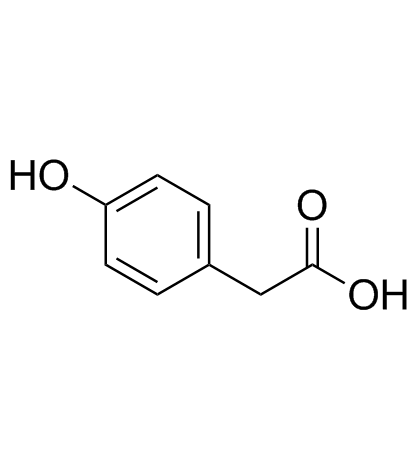 CAS#:156-38-7
CAS#:156-38-7 CAS#:1081-71-6
CAS#:1081-71-6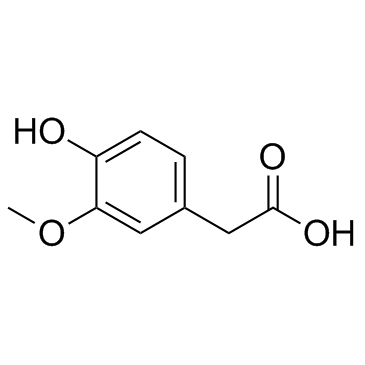 CAS#:306-08-1
CAS#:306-08-1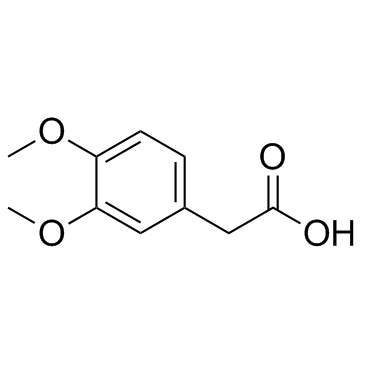 CAS#:93-40-3
CAS#:93-40-3 CAS#:6309-18-8
CAS#:6309-18-8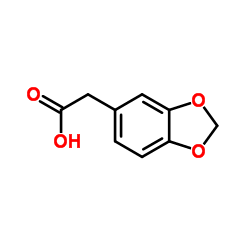 CAS#:2861-28-1
CAS#:2861-28-1 CAS#:1126-62-1
CAS#:1126-62-1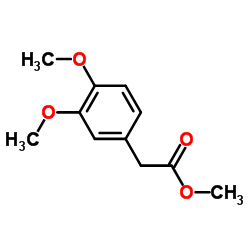 CAS#:15964-79-1
CAS#:15964-79-1 CAS#:151562-58-2
CAS#:151562-58-2 CAS#:326-59-0
CAS#:326-59-0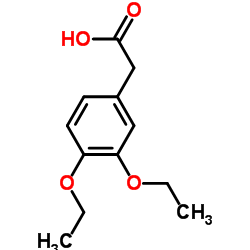 CAS#:38464-04-9
CAS#:38464-04-9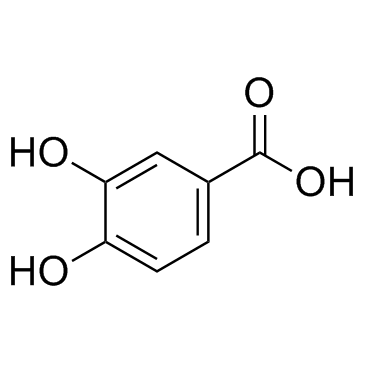 CAS#:99-50-3
CAS#:99-50-3 CAS#:7417-21-2
CAS#:7417-21-2![BENZO[1,3]DIOXOL-5-YL-ACETYL CHLORIDE structure](https://image.chemsrc.com/caspic/194/6845-81-4.png) CAS#:6845-81-4
CAS#:6845-81-4 CAS#:13023-73-9
CAS#:13023-73-9 CAS#:10597-60-1
CAS#:10597-60-1
